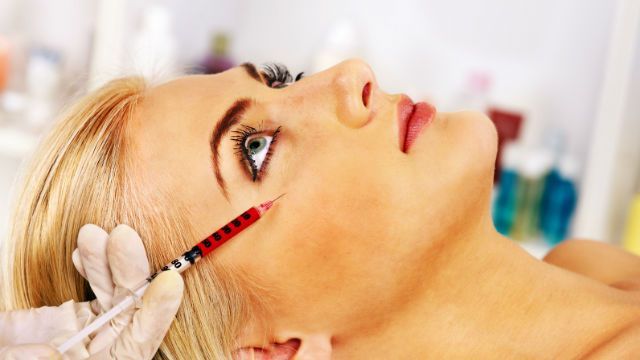
Not long ago, if you wanted to look younger you would call up a plastic surgeon and undergo any number of painful surgical procedures to get rid of those fine lines and wrinkles. But then, what seemed like the miracle answer came along in a tiny, seemingly painless needle.
Botox injections made quite an impact on the cosmetic surgery scene, offering patients a way to reap the rewards of plastic surgery without having to go under the knife. Botox is nothing more than a purified dose of botulinum toxin A, a bacterium that causes botulism and has deadly side-effects.
Nevertheless, eager patients continue to line up for their regular facial injections as the line-reducing effects of Botox and its competitor, Myobloc by Solstice Neurosciences, are only guaranteed for up to six months. But you may want to think twice about your biannual Botox injection, according to current research.
When Italian researchers injected samples of botulinum toxin A into several areas of the faces of lab mice, they found the bacterium didn’t always stay put. The whisker pads, hippocampus and superior colliculus all received injections. The hippocampus is the area of the brain associated with long-term memory, while the superior colliculus is the area of the brain responsible for receiving signals from the eye.
Three days after the initial injections, researchers found the bacterium originally injected into the whisker pads had made its way to remote areas of the central nervous system. The toxin also made its way from one side of the brain to the other from the initial hippocampal injection and in areas of the eye from the superior colliculus injection.
These results led researchers to issue a call to manufacturers of the medication as well as doctors, who openly admit we don’t know what the long-term implications of Botox use will be.
While this would appear to be a major finding and reason to recall or halt use of the product, this has not occurred. Certain proponents of the drug claim that the injections far exceeded standard doses and that the injections are safe for regular use. However, opponents of Botox and its competitors claim otherwise.
They argue that regular injections have become fashionable and too many black-market products have been popping up on the scene. Some doctors are not sufficiently trained in the handling or injecting of the medication and some individuals often go as far as injecting themselves. These do-it-yourself jobs can have devastating consequences, and tainted batches can have deadly results.
 The FDA issued stronger warnings on the drug after an investigation uncovered over 180 reports of side-effects from a batch of Myobloc. These included fluid on the lungs, difficulty swallowing and pneumonia. A total of 16 individuals died, including a few children.
The FDA issued stronger warnings on the drug after an investigation uncovered over 180 reports of side-effects from a batch of Myobloc. These included fluid on the lungs, difficulty swallowing and pneumonia. A total of 16 individuals died, including a few children.
Botulinum toxin A contaminates food and infects untreated wounds. Once in the body, it paralyzes the respiratory system, having deadly consequences. Until scientists learn more about the effects of Botox and other such drugs on the brain and their ability to migrate through the nervous system, opponents of the drug propose sticking with your wrinkle cream to treat those pesky lines and wrinkles. Or better yet, try one of these botanical extracts from a previous article we wrote.
-The Alternative Daily
Sources:
http://journals.lww.com/neurotodayonline/toc/2008/06050
http://www.foxnews.com/story/2008/04/02/study-finds-botox-may-move-from-face-to-brain/
http://www.dailymail.co.uk/news/article-148633/Botox-long-term-health-risk.html
http://www.lawyersandsettlements.com/features/botox-death-paralysis/botox-dermatologist.html#.U6GzFV4ebLQ
http://journals.lww.com/ajnonline/Citation/2005/03000/Botox_Goes_Black_Market__New_dangers_arise_for.16.aspx

